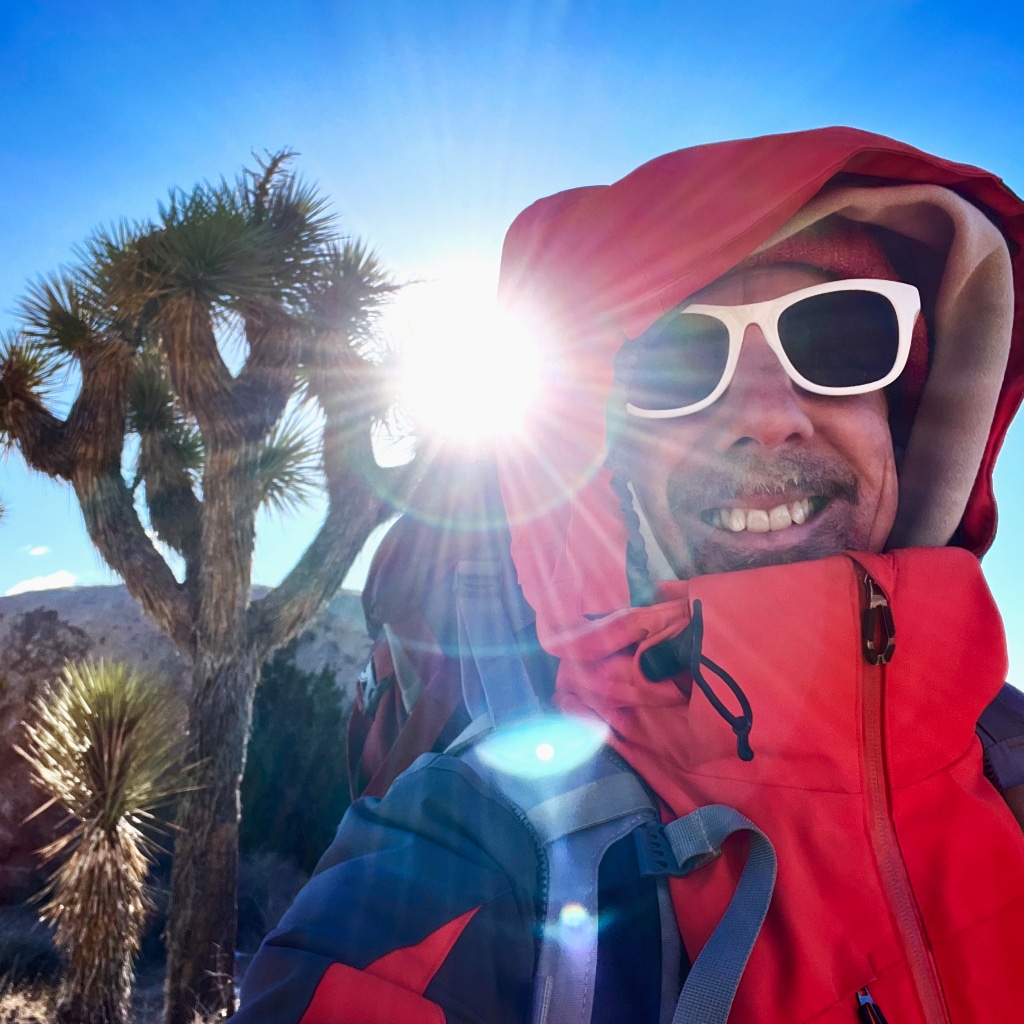I recently did a tech-free (well, aside from my camera) adventure in the blissful playground of Joshua Tree National Park. Casually led by 2 seasoned climber friends, we explored a number of rock climbing routes inside the park. I learned a few things. Read as both literal and metaphor.
1. Going Down is 3x harder than going up.
When you’re climbing up, you can place your feet with total confidence, and you can push with your legs and pull with your arms. You are looking, clearly, at where to place your hands (solid grips), and you are generating a clear mental map of what is ahead using your forward facing cameras (your eyes), where to place your feet, etc.
Oftentimes there is an “easy” way down, along the backside of the mountain / rockpile / boulder / cliff. But sometimes there is not. And sometimes — due to a team decision, or an individual safety assessment — you have to stop midway so the only way back down is the way you came up. And sometimes, just for the raw challenge of it, you choose to descend along your ascent route.
And so you find yourself backstepping, butt-sliding, and belly-crawling, feet-first, essentially backwards, down extremely steep faces with extremely low visibility for where to place your feet. More than once I found myself on my belly, head-forward, peering down over a precipitous overhang, trying to spot the potential footholds. After I hoped I had found something, I would spin my body 180° so i was feet-first, grab some decent handholds, and just basically dangle my body, blind, until my feet found some purchase.
Often those footholds were at the maximum extent of my musculo-skeletal stretch. In other words, i was hanging from my fingertips over a cliff, arms fully stretched, legs extended, toes pointed, “feeling around” for something… and finally, prayers answered, my toes would land on something that felt like the micro-ridge that I had visually identified 10-60 seconds prior.
As my friends and I came to say, “That was hella sketch!”
Basically, if its sketch going up (requiring some jumps, dynos, or “nail that hold or fall” moments), then its gonna be triple-sketch trying to belly-slide your way back down the same.
I will try to remember this.
2. Ice and Cold suck.
There was one particular route that I had balked on the day prior, a mere 15′ from the goal. I was determined to succeed the following day. What I had not counted on was that, overnight, it had rained and snowed, winds had increased from 20mph to gusts of 50mph, and the daytime temperature had dropped about 30°.
These three factors combined fundamentally changed the level of difficultly. So while I was pretty damn confident that, given identical conditions to the day prior, I could have tackled it, two complications occurred:
a) my trusty footholds were now little frozen micro-puddle of ice. the snow and rain had collected in the little dips, then frozen. So while they were still technically “ledges” to put my feet on, I had much less confidence in their “friction”. Instead of sticky, they were now slippery. Urgh.
b) the second one took some time, and did have a solution: about 5 minutes up, the combined temperature and wind had my fingers completely numb. I could no longer feel the rock, and it seemed that my muscles were slower. So I was “pray gripping” rather than “feedback gripping”. Since I couldn’t feel my hands, I just sent muscle signals to pull and squeeze with maximum force…
when usually I modulate the force based on how much i need to pull, and how much I trust the grip (in lots of jTree routes, the grip points look and feel like at a certain force level, they will just snap off. I’ve had a few do that. So I generally put the minimum necessary force on the hand hold, in order to get to my next move / grip)
3. Climbing is funner (and safer) with Friends
Friends can tell you to be careful. Friends can watch and call for help or help themselves if you fall or get injured. Friends can call spotting / holds from down below: “Just 3 inches to your right, place your foot!” Friends can lend encouragement and/or appropriate caution.
Friends can give you “beta” (the ideal hold map / movement pattern for a given face / route). Friends can tell you how idiotic you are. Or how courageous and skilled. Or none or all of the above. Friends can share stories with you afterwards. Friends can share in the frustrations, and the glory. Friends are more fun.
4. I am a more confident and competent climber with mushrooms.
A little bit of plant medicine both clears out my fear-based bullshit, and allows me to both see and move like my inner monkey. Its true: with monkeyvision, I just simply look at the rock, and the holds pop into vision like a hologram projected onto the rock. The routes are obvious.
And because monkey knows, innately, how to move his body up and down rocks and trees, monkey moves with total flow and confidence.
The next day, I was not mentally enhanced in any way. I felt like my vision had been impaired. Routes that were totally obvious the day prior suddenly seemed highly sketch or even impossible. I could no longer see the grips or the routes. I felt like I was walking in shadow, like a mental retardation had infected my climbing brain.
And so, I went back down,
and found an easier summit that day.
.
G R E G O R Y ‘ S . M O U N T A I N S

